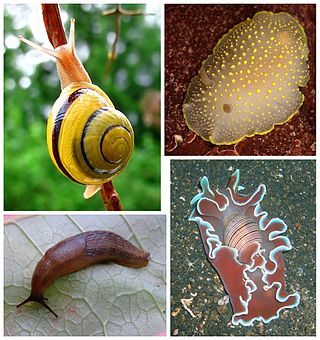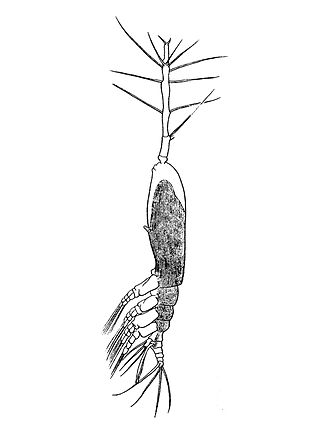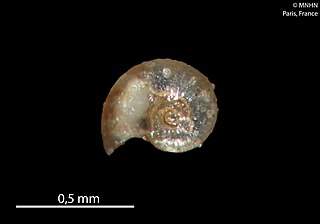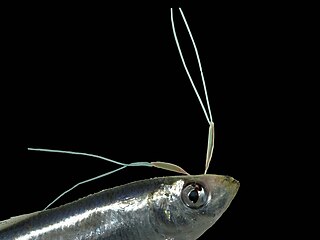
Coronaviruses are a group of related RNA viruses that cause diseases in mammals and birds. In humans and birds, they cause respiratory tract infections that can range from mild to lethal. Mild illnesses in humans include some cases of the common cold, while more lethal varieties can cause SARS, MERS and COVID-19, which is causing the ongoing pandemic. In cows and pigs they cause diarrhea, while in mice they cause hepatitis and encephalomyelitis.

Horseshoe bats are bats in the family Rhinolophidae. In addition to the single living genus, Rhinolophus, which has about 106 species, the extinct genus Palaeonycteris has been recognized. Horseshoe bats are closely related to the Old World leaf-nosed bats, family Hipposideridae, which have sometimes been included in Rhinolophidae. The horseshoe bats are divided into six subgenera and many species groups. The most recent common ancestor of all horseshoe bats lived 34–40 million years ago, though it is unclear where the geographic roots of the family are, and attempts to determine its biogeography have been indecisive. Their taxonomy is complex, as genetic evidence shows the likely existence of many cryptic species, as well as species recognized as distinct that may have little genetic divergence from previously recognized taxa. They are found in the Old World, mostly in tropical or subtropical areas, including Africa, Asia, Europe, and Oceania.

Heterobranchia, the heterobranchs, is a taxonomic clade of snails and slugs, which includes marine, aquatic and terrestrial gastropod mollusks.

Morelia is a genus of large snakes in the family Pythonidae found in Indonesia, New Guinea, and throughout Australia. Currently, up to eight species are recognized.
Antrisocopia is a genus of Copepods in the family Platycopiidae. There is at least one described species in Antrisocopia, A. prehensilis.
Boeckella is a genus of copepods in the family Centropagidae.
Erebonectes is a genus of crustacean in family Epacteriscidae, containing two troglobitic species. E. nasioticus was discovered in Bermuda and described in 1985; it is listed as critically endangered on the IUCN Red List. E. macrochaetus was found on Middle Caicos and described in 1994.

Streptocephalus is a genus of fairy shrimp found in temporary waters in Africa, Australia, Eurasia, and Central and North America, following its ancient origin in Gondwana. It contains the following species:

Thermocyclops is a genus of crustacean in family Cyclopidae. It was first described and later extensively researched by Friedrich Kiefer, who discovered some 20 species. The species and subspecies of the genus inhabit fresh and brackish waters alike all around the world, although most are from tropical areas.

Monstrilloida is an order of copepods with a cosmopolitan distribution in the world's oceans. The order contains a single family, Monstrillidae. The name of the first ever described genus Monstrilla is derived from latin, meaning "tiny monster", because the lack of usual diagnostic features of copepods puzzled early taxonomists.

Omalogyra is a genus of minute marine gastropod molluscs in the family Omalogyridae.

Paramysis is a genus of mysid crustaceans (Mysidacea) in family Mysidae, distributed in coastal zone of low boreal East Atlantic Ocean, Mediterranean Sea and the basins of Black Sea, Sea of Azov and Caspian Sea.

Oenopota is a genus of sea snails, marine gastropod mollusks in the family Mangeliidae.

Pennellidae is a family of parasitic copepods. When anchored on a host, they have a portion of the body on the outside of the host, whereas the remaining anterior part of the parasite is hidden inside tissues of the host.

Platycopiidae is a family of copepods. Until the description of Nanocopia in 1988, it contained the single genus Platycopia. It now contains four genera, three of which are monotypic; the exception is Platycopia, with 8 species.
Sarsicopia is a genus of Copepods in the family Platycopiidae. There is at least one described species in Sarsicopia, S. polaris.
Pseudocyclopiidae is a family of copepods, comprising the following genera:
Mildred Stratton Wilson was an American zoologist, whose work on copepods was awarded a Guggenheim Fellowship in 1955.

The clade Multicrustacea constitutes the largest superclass of crustaceans, containing approximately four-fifths of all described crustacean species, including crabs, lobsters, crayfish, shrimp, krill, prawns, woodlice, barnacles, copepods, amphipods, mantis shrimp and others. The largest branch of multicrustacea is the class Malacostraca.
Arietellidae is a family of copepods belonging to the order Calanoida.













